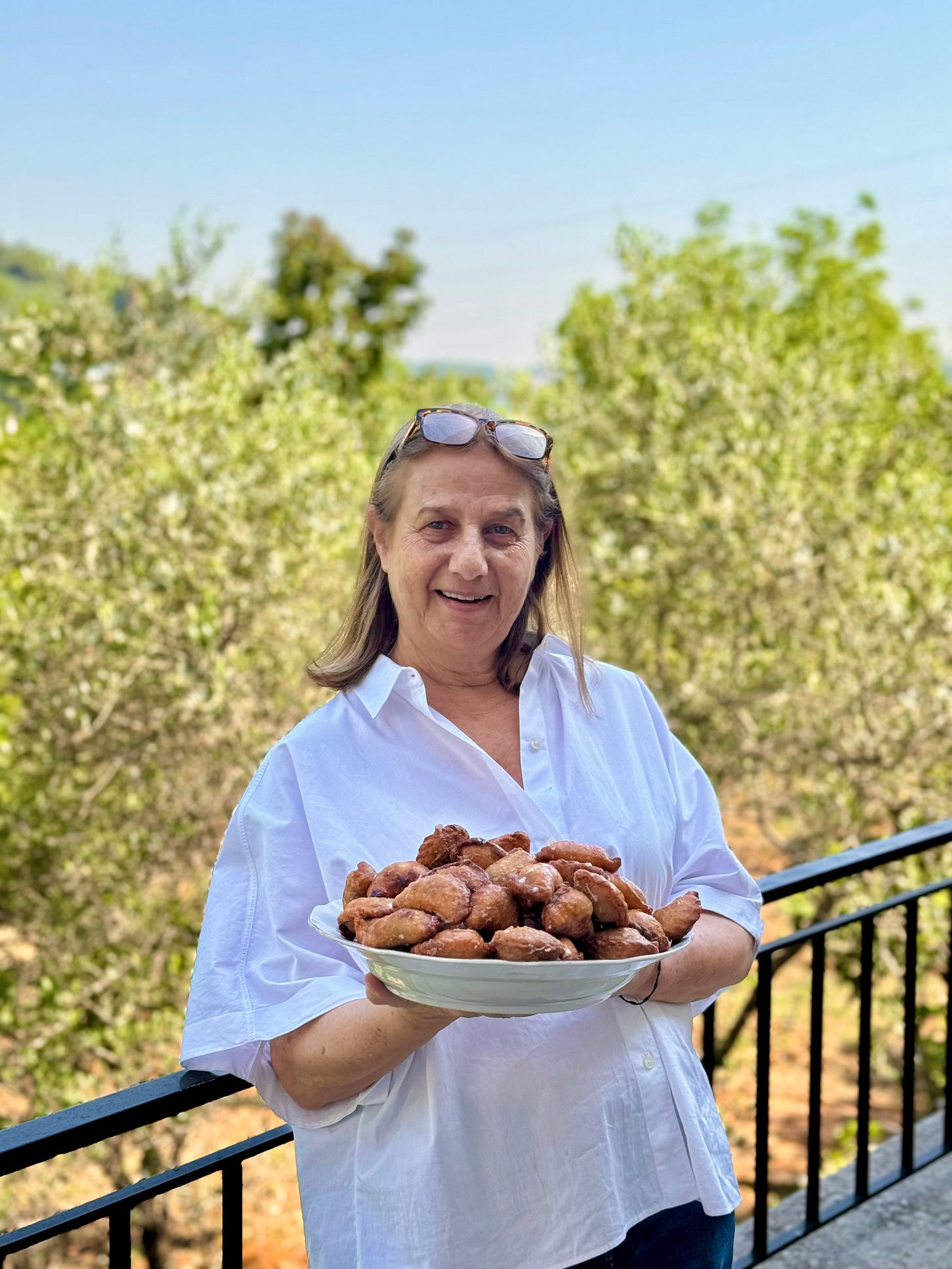Long ago, before the food processor became a common gadget in most Lebanese kitchens, cooks used a mortar and pestle to pulverise ingredients. Most home cooks had two: one small and wooden to pound garlic and another large and carved out of stone for meat, especially meat for kibbeh (a seasoned mixture of minced meat and burghul for those who still don’t know about kibbeh). My mother kept her garlic mortar & pestle in her spice cabinet whilst the heavy stone one was pushed to one corner, ready to be dragged to the middle of the kitchen whenever she and my grandmother were ready to make kibbeh. On that day, they placed two low wooden stools either side of the mortar to take turns pounding the meat — it took a very long time beating on the chunks of meat to pulverise them into a pink, silky paste.
It was long before I left home at 21 that my mother had retired our stone mortar and she eventually gave it away with one of our moves — my parents moved houses several times, even before I left. Anyhow, I had not seen a stone kibbeh mortar for ages, years actually. Not until this last trip to the home country when I went up to Beino, a beautiful, well preserved village far up north in Akkar, a poor but fertile region near the Syrian border and my father’s native village, Mashta el-Helou, even if the latter is not relevant here.
I was there to visit Nahla (an online friend who quickly became an in-person friend) from the Attieh family, one of the main Beino families who seemed to own half of the houses there. Nahla had very kindly asked her aunt’s cook to prepare lahm bil-khall (or meat in vinegar) for me, a typical dish from that little town after an exchange about it on instagram. Another friend, Ruby, also from Beino, had very kindly asked her father, Fayez, to host us in their beautiful guest house, Beino Blue House.
And it was in Fayez’s house that I spotted the jurn (stone mortar in Arabic), also stuck in a corner with the wooden pestle (top pic) as I remembered it from my youth. In fact, Fayez had two pestles although I suspect the smaller one (in pic behind the mortar) may have been too light for pounding meat but I never asked.
I will leave our very special morning at Nahla’s aunt’s house, together with her uncle and mother, great aunt and cousins, and the cooks of course for another post. I will just add another picture of Nahla’s mother, Mani, holding a plate full of bsiss, an amazing sweet take on sambüsak made with a very flaky pastry filled with walnuts. Unusually, these are not dipped in syrup and as a result, they are a lot less sweet than those that are. They were another discovery! As a matter of fact, as I am about to finish researching and writing the book, I realise that I could have spent another year criss crossing our tiny ountry while still discovering regional dishes that are totally new to me.
And here is a picture of kibbeh nayeh that I took many moons ago. If I had pound the meat in a jurn, the kibben would have been a lot more smooth!








Wow, what a find! That pestle is seriously impressive. The kibbeh must be extra-fine.
We actually have a small collection of mortars and pestles in a variety of shapes and sizes, with each set dedicated to different ingredients or purposes – black pepper, chilli, rempah (spice paste for curries), pesto, garlic, ginger, lemongrass...
But we've never seen one for kibbeh, thanks for sharing!
Eagerly waiting for bsiss recipe…. Not drenched in syrup is very intriguing